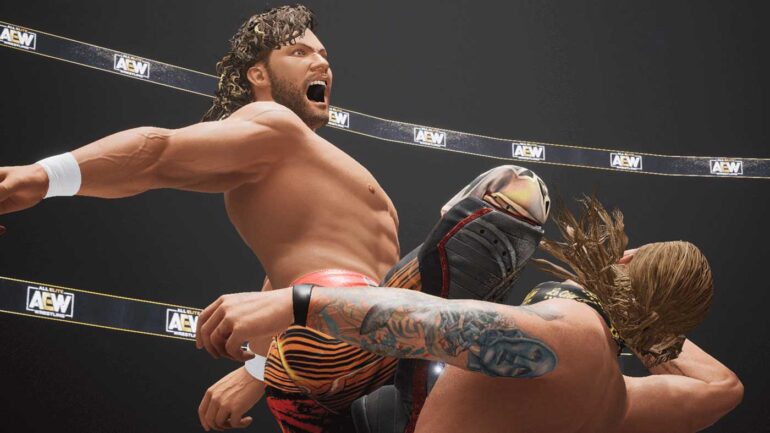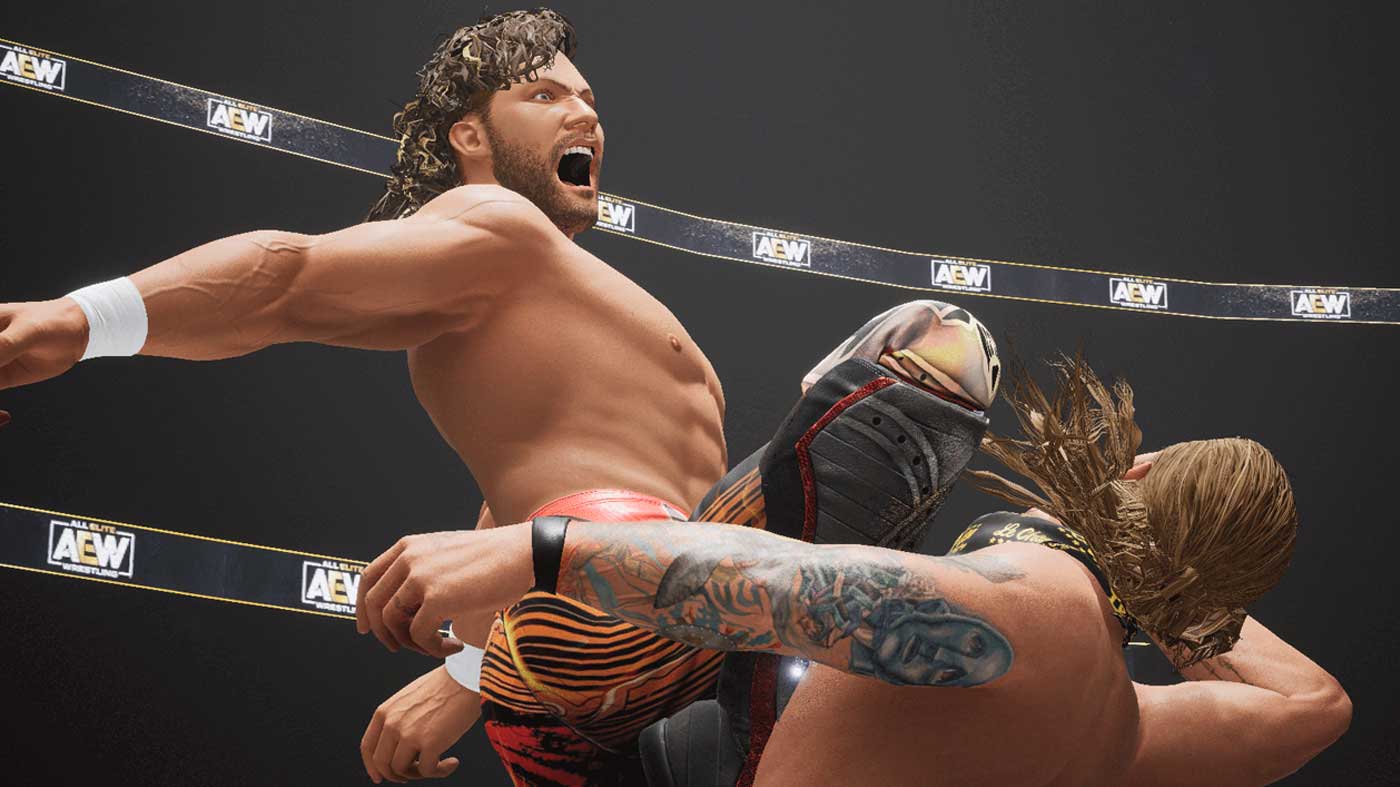As someone who primarily watches the McMahon-Helmsley federation, because who could resist that Bloodline story arc, my familiarity with All Elite Wrestling is limited to an all-too arrogant-champion whose dedication to kayfabe knows no bounds, buckets of blood, and a little bit of the bubbly. When I heard that the upstart wanted to create a video game to recapture the feel of Nintendo 64-era games like WWF No Mercy, rather than compete with their 2K contemporaries, my ears pricked up. And then when I heard they managed to jag Hideyuki Iwashita to direct, I began to believe.
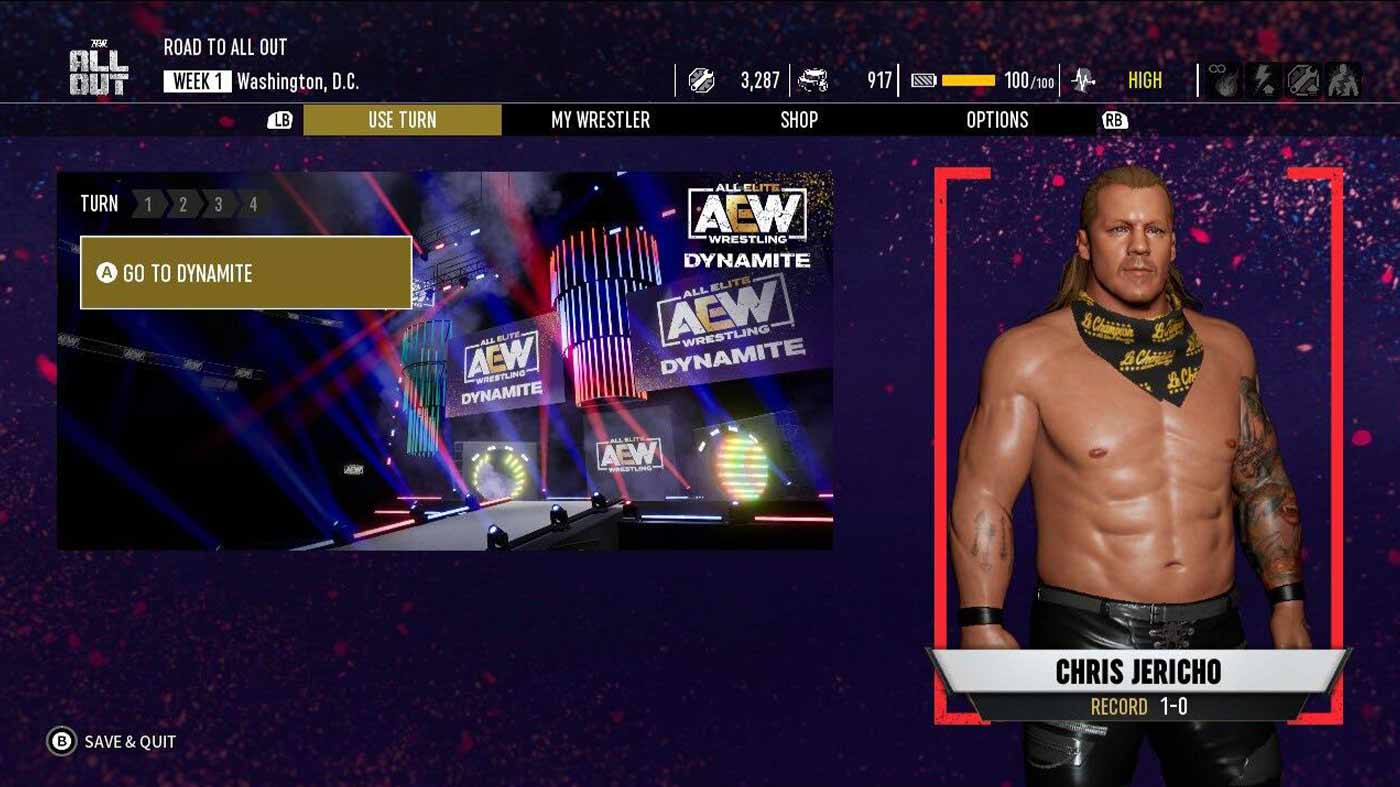
Almost immediately, AEW: Fight Forever captures the spirit of those AKI games I used to adore. It features the same arcade framework, and feels like No Mercy’s classic engine made new again. However, emulating a quarter-century old game can tend to expose a few gaps in budget and feature-suite, no matter how good the game’s feel is.
The wrestling itself feels very much like No Mercy or Wrestlemania 2000, mixing both regular or strong strikes and grapples to wear your opponent down. In a system that mirrors even modern wrestling games, the aim is to wear opponents down, causing limbic damage, while building enough momentum to perform your signature and finisher moves. In an effort to modernise its aged systems, action and passive skills can be assigned similarly to stat points, giving a variety of buffs that can help turn the tide of a match—desperation kick outs, kip ups, and first-strike buffs all add a strategic layer to the classic No Mercy formula.
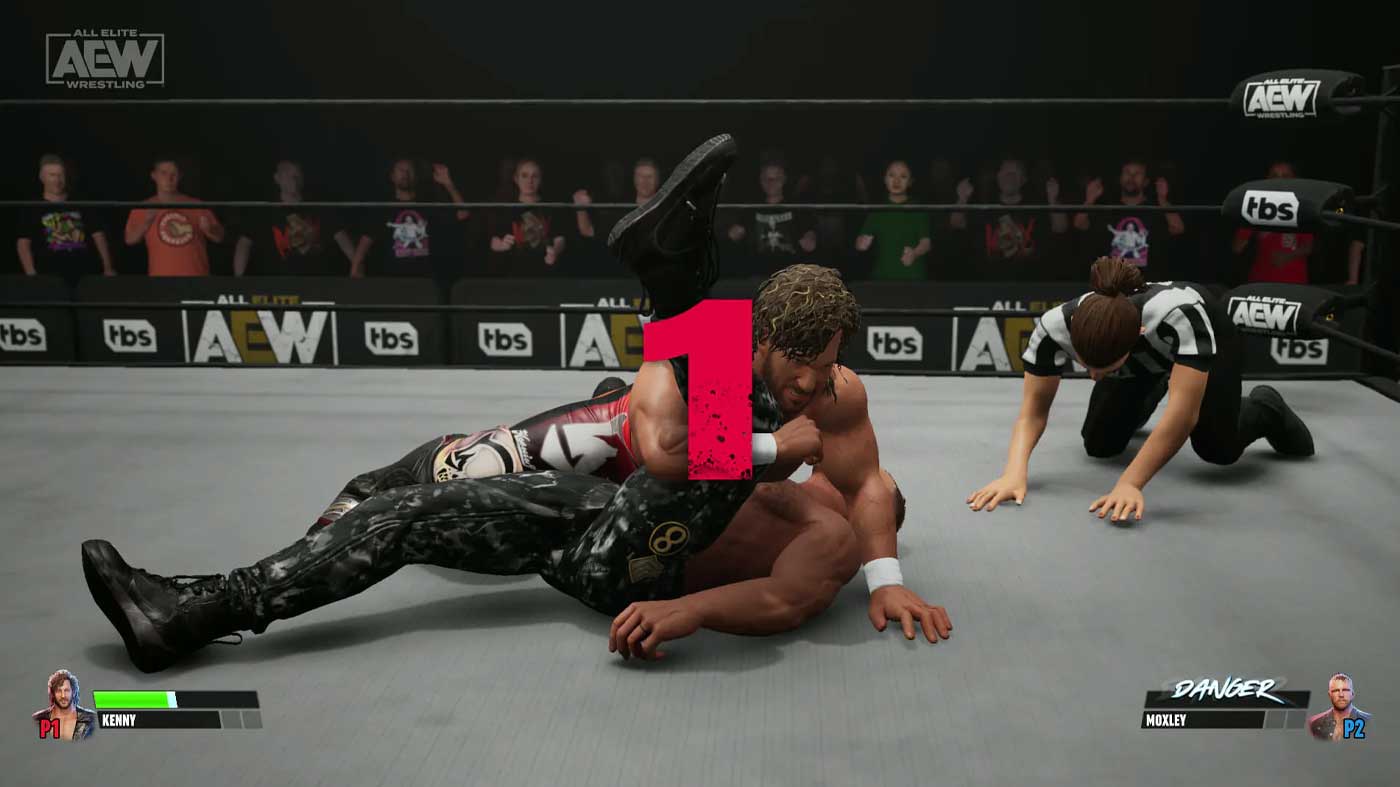
I also feel as though the way momentum is handled can lead to unbalanced experiences, from time to time. Unlike finishers, signature moves don’t seem to drain momentum which led to me giving out Stunners as though they were charitable donations. Similarly, I feel like frustration when playing is set to stem less from the difficulty itself and more from all-too-common cheap losses in the game’s bigger four-way matches.
Although there are a good amount of match types, Road to Elite will be the main draw for people wanting some form of structure and story, a term I use loosely. It’s digestible and crafted with replay value in mind, and I’d sooner liken it to Mortal Kombat’s Tower than its story mode. With either a created or rostered superstar, you’ll progress through one year of AEW programming broken up into four blocks full of weekly shows leading up to the brand’s quarterly marquee events.
THE CHEAPEST COPY: $74.99 SHIPPED AT AMAZON / MIGHTYAPE
Even if it’s largely forgettable to play, it’s the moments of history peppered throughout Road to Elite that make it feel special. It’s not exactly their rival’s seventy-some years of history they’re drawing from, but it’s nice to see all of the company’s defining moments across four years touched on, from the brand’s formation, to Jericho’s inaugural reign as champion, to CM Punk’s debut. It’s all framed within this weird, jet-setting adventure that highlights all of the lesser-thought of parts of the business—meet and greets, enjoying local cuisines, and even lifting weights. It all ties into the mode’s management busy work which lurks on the periphery of the fun stuff.
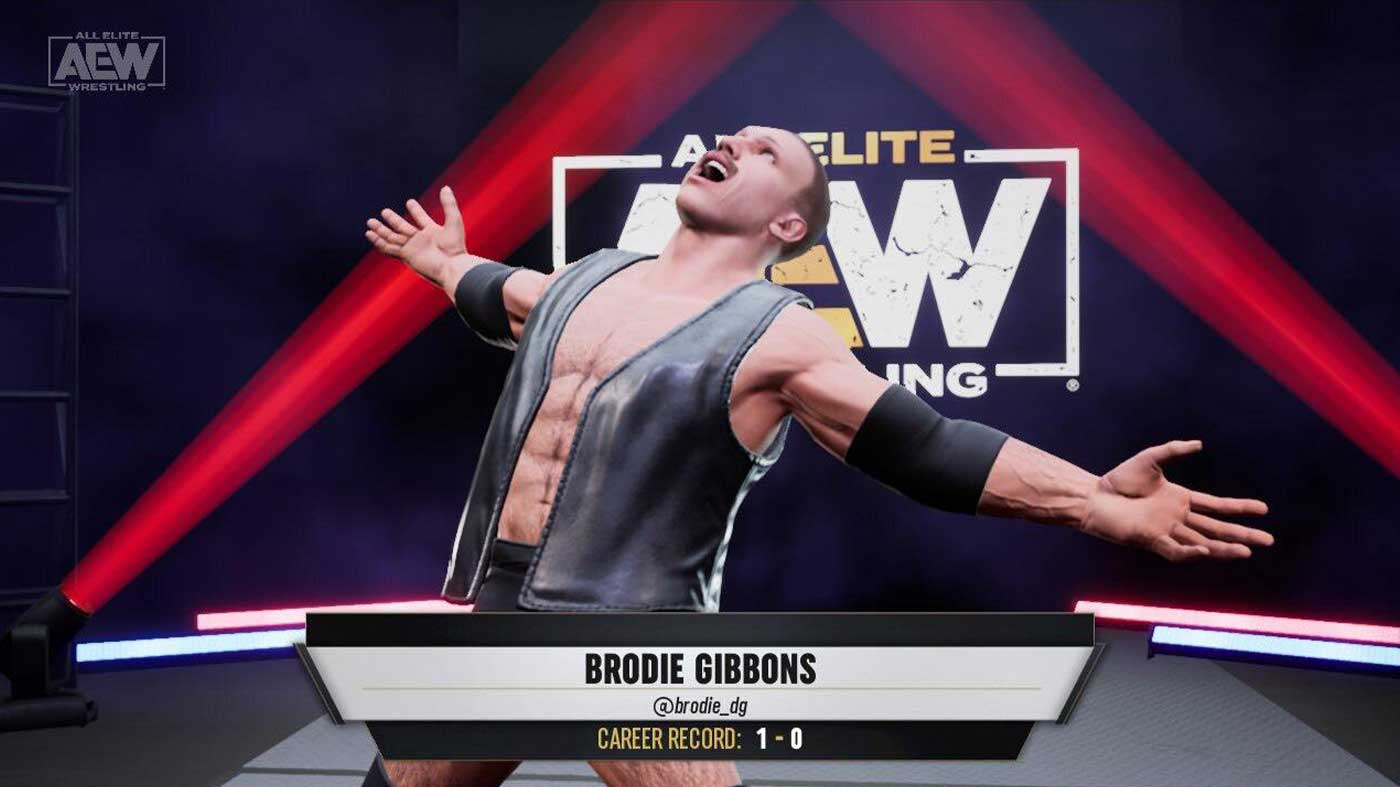
Though there are other superstars on the way courtesy of a season pass, Fight Forever’s roster of around fifty is pretty comprehensive. There’s one or two omissions I am a tad curious about, but it’s hard to fault the selection. It’s definitely big of those making the call to keep Cody Rhodes in the game in spite of his defection back to WWE to “finish the story”. His place in the startup’s history is assured, so it was nice to see. Similarly, the match types that are on offer cover off on everything the brand is known for, the most extreme being the Exploding Barbed Wire Deathmatch which is as nuts as it sounds—I can’t believe it’s a real match type.
In one of the more unexpected twists, Fight Forever has a small selection of Pokémon Stadium-like mini-games to really hammer home that absurd, arcade feel the game has. Although the list of challenges alludes to more being added post-launch, the three we’ve got so far are a bit of fun. As a sucker for trivia, my favourite of the bunch is certainly the pop quiz full of deep cuts only fans could appreciate.
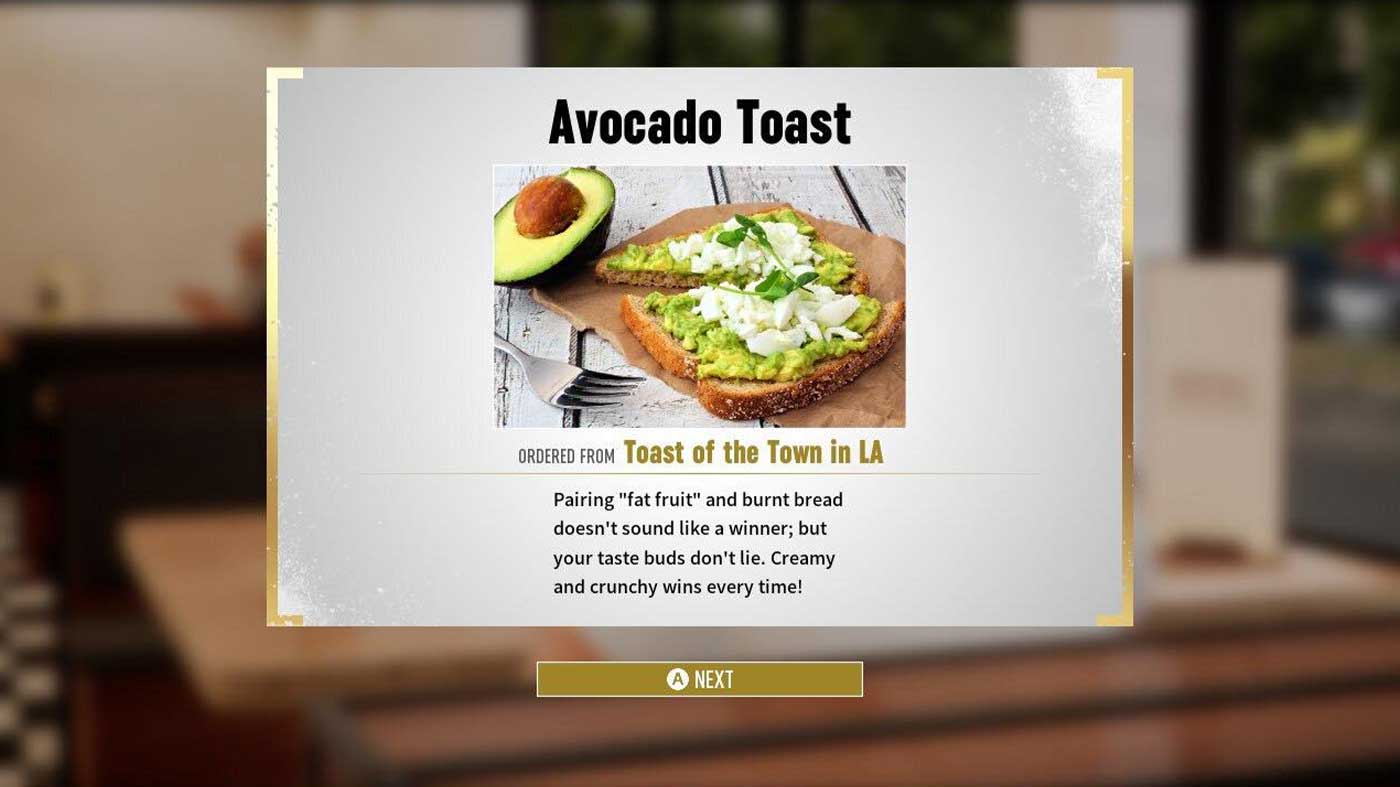
In addition to its season pass, Fight Forever has some other “live service” features like challenges, including both dailies and weeklies, that’ll line your pockets with credits to buy things like superstars, arena decor, and taunts from the shop. Some moves and taunts walk the line of trademark infringement, with Brock Lesnar’s devastating F5 featuring under the tongue-in-cheek name “Diverticulitis” while Roman Reigns’ lock and load taunt serves as acknowledgement of The Tribal Chief. As I’ve already unlocked a decent portion of what’s available, I look forward to seeing how often the shop’s stock is refreshed, if at all.
Because it’s a first effort, I didn’t want to be too critical of the game’s creation suites. I mean, you’re not going to see big communities emerge for created superstars in Fight Forever, and stitching together entrances using other star’s music and moves feels appropriately dated, given it’s something I recall doing back in No Mercy. Though I couldn’t manage to find anyone else playing pre-launch, I expect the game’s classic and largely accessible systems will breed a pretty fun and competitive space for people to enjoy wrestling without all of the deck-building nonsense its contemporaries have forced into the mainstream.
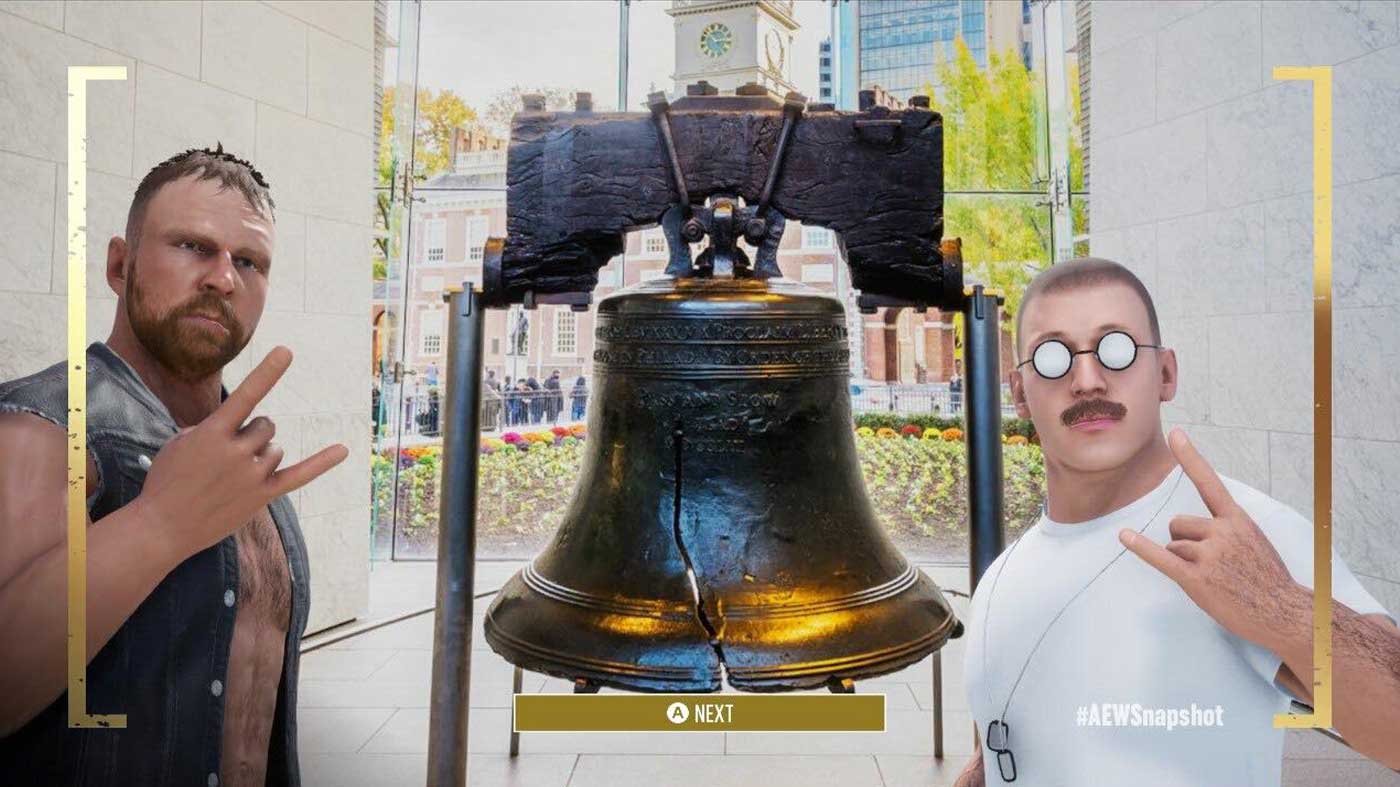
Through cartoonish, chonky character models, Fight Forever carves out a fun niche right beside the realistic presentation of the WWE titles. Chris Jericho’s keg-chest and CM Punk’s “most punchable face in wrestling” are both realised with comical accuracy, with all the roster looking the part aside from a couple of so-so renders. I wish I could say the presentation was spectacular throughout, though when you’re chasing the past’s glory as Fight Forever does, graphics ends up being an area where corners can be cut. Long, flashy entrances make way for truncated strolls, and blood spatter—as cool as it is to have a serial-bleeder like Moxley leaking claret like he was born to do—looks like a stamp that appears on the canvas, without any semblance of dynamic at all.
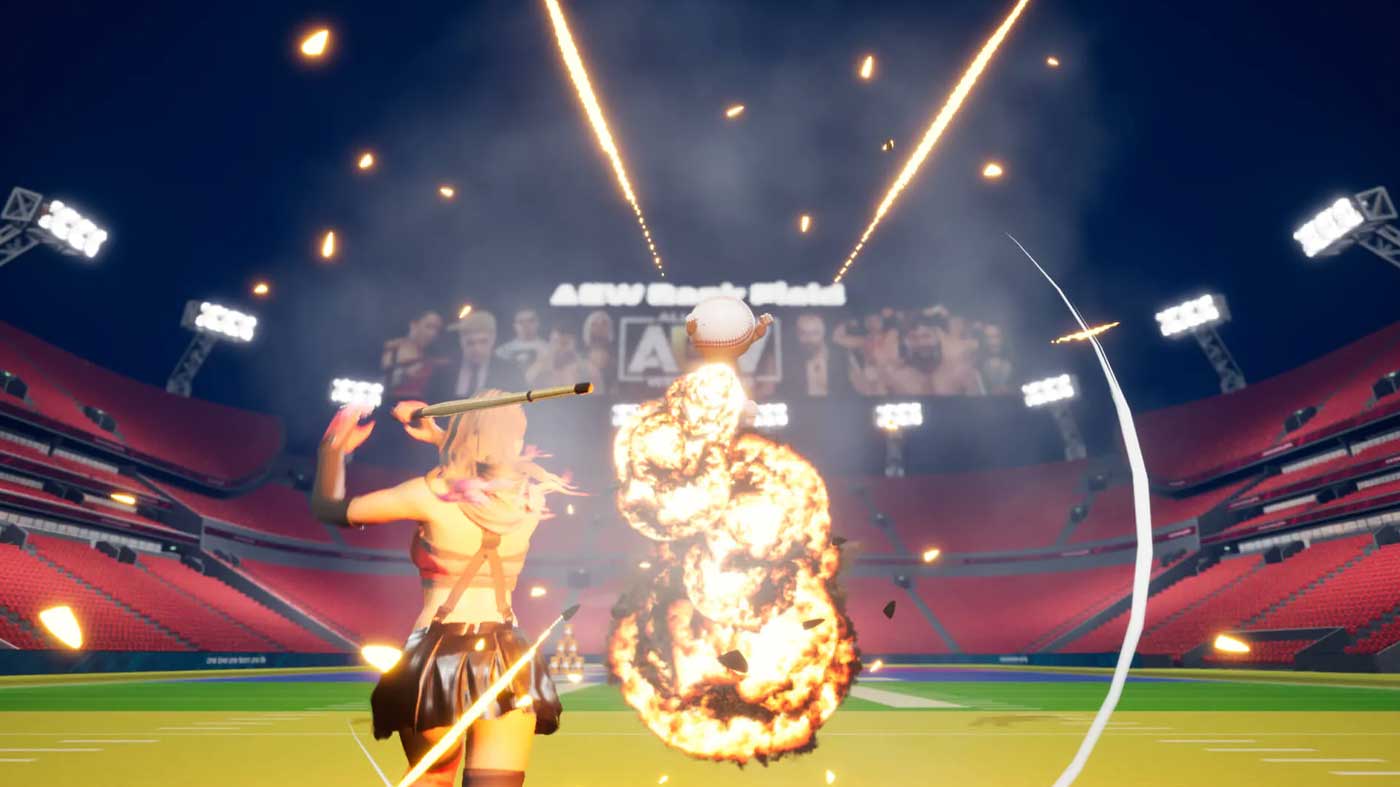
There are a lot of known graphical hitches that I’m sure will be ironed out by launch, including a lot of clipping and render issues. Though, that same cheapness extends to the voiceover efforts which are basically reserved for owner Tony Khan. Beyond that, the written word does the heavy lifting of the oddball drivel that comes out of other superstar’s mouths. A few gimmicks land within the scope of Road to Elite’s script, though it’s a bit of a mess considering I saw Kenny Omega referring to others as Kenny when cutting promos.
It’s that kind of oddity that sums up the Fight Forever experience. For every bloody perfect thing it delivers from the vintage No Mercy experience, it serves up something you wish was left in the 64-bit age.


